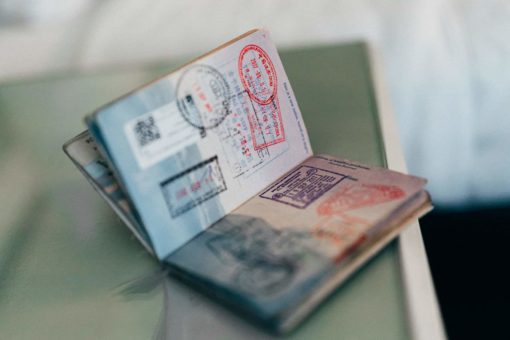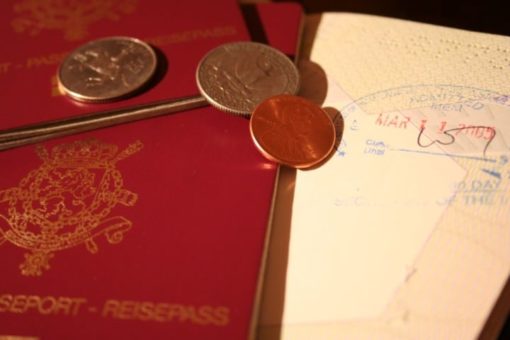EES Entry & Exit System For Schengen Area Border Control
Did you know that Europe can offer you one of the best travel experiences?
The Schengen countries are filled with jaw-dropping views, artworks, famous landmarks, and delicious food.
However, before discovering different cultures, cuisines, and languages, you have to deal with organisational bureaucracy.
Most of the time, bureaucracy is the nightmare of every traveller who needs a Schengen Visa to enter Europe.
Nevertheless, we have fantastic news!
Even though the Visas Association team cannot eliminate the Schengen bureaucracy for you, we can help by providing you with valuable assistance and information.
As a result, we can make this process easier for you.
Firstly, we are constantly improving our services to guide you through your Schengen Visa application process.
Secondly, we aim to provide you with relevant details concerning the Schengen Visa policies and rules.
For this reason, we have prepared a comprehensive guide about the European Entry/Exit System (also known as EES) that will soon be implemented to create smarter borders for the EU.
We strongly recommend you read this guide before using your Schengen Visa to travel to Europe.
Table of contents:
1. What Is The Entry/Exit System (EES)?

The Entry/Exit System (EES) is a modern IT system that registers third country nationals crossing the external borders of the Schengen Member States (air, land, and sea borders).
Eu-Lisa (European Agency for the Operational Management of Large-Scale IT systems) is responsible for developing the system.
The eu-Lisa IT agency was founded in 2011 and is headquartered in Tallinn (Estonia’s capital).
To visit the agency’s official website, please visit this link.
The automated EES is an ambitious initiative that will radically change the Schengen Border Code and replace the current passport manual stamping system (which is the sole method currently available to border guards and Visa authorities).
You might have noticed that immigration authorities are typically stamping travellers’ passports with entry and exit dates when crossing the borders of a foreign country.
The method of manually stamping passports has significant drawbacks, such as:
- Sometimes, stamps are poorly printed (which makes the entry and exit dates not clear)
- They do not allow an electronic record of travellers’ personal data
- It is easy to add a fake stamp to a travel document, which can facilitate illegal immigration and other criminal offences
- People travelling regularly to the Schengen Area need to replace their passports way too often as they run out of blank pages for new stamps
Therefore, the EES will do the work instead of the EU and Schengen immigration officers for law enforcement purposes.
The European Commission and European Parliament are expecting the system to be operational in the first half of 2022.

We have already shared a few considerations on how to cross the Schengen borders successfully.
Please note that you may still need to consider our expert tips and tricks on crossing the Schengen external borders even after the EES system becomes operational.
The EES has the following objectives:
- Improving the border controls quality and efficiency by implementing a modern border management system
- Reinforcing internal security
- Helping the Member States dealing with the increasing number of travellers
- Recording refusals of entry
- Collecting non-EU travellers data
- Preventing irregular migration and illegal border crossings
- Protecting European citizens and residents’ security
- Identifying cases of false documents and identity fraud more efficiently
- Making border control checks quicker and more comfortable
- Identifying overstayers (individuals who have broken the 90/180-day rule or exceeded the maximum duration of their authorised stay)
- Fighting against terrorism, criminal offences, and other serious threats
- Informing travellers of the duration of their authorised stay
- Creating a unified information system to record non-EU nationals’ travel histories
- Facilitating irregular migrants expulsion
- Reducing costs and waiting times through process automation
Now that you know the EES objectives, you should also know that the system will apply to all non-EU nationals travelling to the Schengen Area.
Thus, the EES will pre-screen you before crossing the Schengen external borders whether you are eligible for an ETIAS Visa Waiver or Schengen Visa.
Before we continue, we would like to remind you that every third-country national can enter the Schengen Area with:
- A Schengen Visa (to find out if you are eligible for a Schengen Visa, please visit this link)
or
- An ETIAS Visa Waiver (the ETIAS system will become effective by the end of 2020. To find out if you are eligible for an ETIAS Visa, please visit this link)
The EES is designed to complement the information in various security databases, such as the Schengen Information System (SIS) and Interpol SLDT (Stolen and Lost Travel Documents).
Please note that the Visa Information System (VIS) Central System already records Schengen Visa holders’ data. Still, the EES aims to create a unique database for all travellers, whether they need a Visa to enter the Schengen Area or not.

2. How Does The Entry/Exit System (EES) Work?
The EES will be composed of a Central System.
Each Member State will have its own National Uniform Interface (NUI) connected to the EES Central System.
The Member States’ law enforcement authorities and EUROPOL will be able to access data in the EES for criminal identification.
However, the information stored by the EES will not be available to any third country, organisation, or private entity located in or outside the European Union.
The EES process can be assisted or automated. For example, self-service systems or terminals will screen travellers under the supervision of the border guards.
The EES will register travellers’ details, such as:
- Biometric data (facial image and four fingerprints)
- Personal data (full name, date and place of birth, citizenship, sex, etc.)
- Travel document details (type, number, expiry date, etc.)
- Schengen Visa details – if applicable (Member State’s letter code, Visa type, duration of stay, validity date of expiry, etc.)
- Other details related to the trip (date and time of the entry and exit and the border crossing point of the entry and exit)
The EES will create a file containing the information listed above for each traveller and store it for three years.
However, the data can also be stored for up to five years in case of Schengen or ETIAS Visa overstaying.

To sum up, the EES is a revolutionary step and a powerful mechanism that will replace the time-consuming passport stamping process currently used to manage migration flows and make the Schengen Border Code more efficient.
As part of the smart borders initiative, the system is designed to detect criminal activities (e.g., human and goods trafficking, migrant smuggling, etc.) and make border checks faster and simpler.
If you hold a valid Schengen Visa, the EES is the last bureaucratic step you have to go through before enjoying an incredible travel experience in the Schengen countries.
If you still have to apply for your Schengen Visa, we are here to help you out. Do not hesitate to contact us for any further questions concerning your application process and Embassy requirements.
We can provide you with a FREE Schengen Visa consultation report that will bring you one step closer to your dream trip to Europe!
